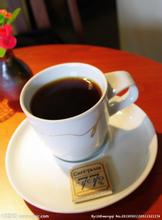Classification of coffee varieties which is the best way to grind coffee
Variety classification editing
Arabica bean coffee trees can be divided into two main varieties: Arabica (Coffea Arabica)
) and Robsta species (Coffea Robusta/Coffea Canephora). There are also some minor species, such as the Liberian species (Coffea Liberica) and the Alabasta species (Coffea Arabusta), but they are rare on the market.
Robusta beans Robusta coffee trees can grow on flat land, it has a strong resistance to disease, and the yield is higher. Compared with Arabica beans, Robusta beans are more round in appearance, with a slightly inflated side with cracks in the middle, and straight grooves reminiscent of soybeans, while Arabica beans are oval and zigzag, a bit like half a peanut.
Generally speaking, Robusta beans are poor in taste, have 2 to 3 times the caffeine content of Arabica beans, and are cheap, mostly for the large coffee industry to produce instant coffee or low-cost comprehensive products. Arabica coffee trees are suitable for growing on fertile hillsides with good drainage at an altitude of about 1,000 to 2,000 meters. The climate should not be too humid, but they still need a continuous rainy season and abundant rainfall. [4]
Medicinal value editor
Main components
1. Small fruit coffee fruit contains alkaloids, the most important of which is caffeine (ooffeine), followed by cocoa.
The fruit begins to ripen
The fruit begins to ripen
Soymarine (theobromine) and theophylline (theo-phylline). The sterols are β-sitosterol (β-sitosterol), stigmasterol (stigi11astero1), rapeseed sterol (campestero1), cholesterol (cholesterol) and trace 5-oat sterol-enol (del5-avenasterol), 7-oat sterol (del7-avenasterol), 7-stigmasterol-enol (Δ 7-stigmasterol). Also contains lipids, in which fatty acids are: nutmeg acid (myristic acid), paulownia acid (palmitic acid), stearic acid (stearic acid), oleic acid (oleic acid), linoleic acid (linoleic acid), peanut acid (arachidic acid). Roots, stems. Leaves and seedlings contain caffeine, theophylline, theophylline, 7-dimethylxanthine (paraxanthine), scopolamine (scope1etin), p-hydroxybenzoic acid (ρ-hydroxybenzoic acid), vanillic acid (vanillic acid), p-coumaric acid (ρ-coumaric acid), ferulic acid (ferulicacid), chlorogenic acid (ch1orogenic acid). Caffeic acid (caffeic acid). Leaves also contain ursolic acid (ursolic acid)

Important Notice :
前街咖啡 FrontStreet Coffee has moved to new addredd:
FrontStreet Coffee Address: 315,Donghua East Road,GuangZhou
Tel:020 38364473
- Prev

Mexican coffee has a light flavor, mild and delicate flavor, and a classic flavor.
In fact, according to Ms. Knudsen, people started drinking fine coffee, but later, due to the growing demand for coffee, the discovery and use of new coffee varieties led to the decline of coffee quality. later, people even began to dislike this bad coffee and began to turn to other drinks. In this case, Ms. Knudsen's re-recognition
- Next

Introduction to the types of coffee trees the ingredients of coffee machine detergent
Coffee (Xoffea arabica Linn) Coffee is a perennial evergreen shrub or small tree of Rubiaceae. It is a horticultural perennial cash crop with the characteristics of fast growth, high yield, high value and wide market. Wild coffee trees can grow to a height of 5 to 10 meters, but coffee trees planted on the manor are often cut to a height of less than 2 meters in order to increase the amount of fruit and facilitate harvesting.
Related
- Does Rose Summer choose Blue, Green or Red? Detailed explanation of Rose Summer Coffee plots and Classification in Panamanian Jade Manor
- What is the difference between the origin, producing area, processing plant, cooperative and manor of coffee beans?
- How fine does the espresso powder fit? how to grind the espresso?
- Sca coffee roasting degree color card coffee roasting degree 8 roasting color values what do you mean?
- The practice of lattes: how to make lattes at home
- Introduction to Indonesian Fine Coffee beans-- Java Coffee producing area of Indonesian Arabica Coffee
- How much will the flavor of light and medium roasted rose summer be expressed? What baking level is rose summer suitable for?
- Introduction to the characteristics of washing, sun-drying or wet-planing coffee commonly used in Mantenin, Indonesia
- Price characteristics of Arabica Coffee Bean Starbucks introduction to Manning Coffee Bean Taste producing area Variety Manor
- What is the authentic Yega flavor? What are the flavor characteristics of the really excellent Yejasuffi coffee beans?

